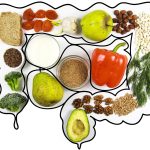What Foods Contain Bifidobacterium?
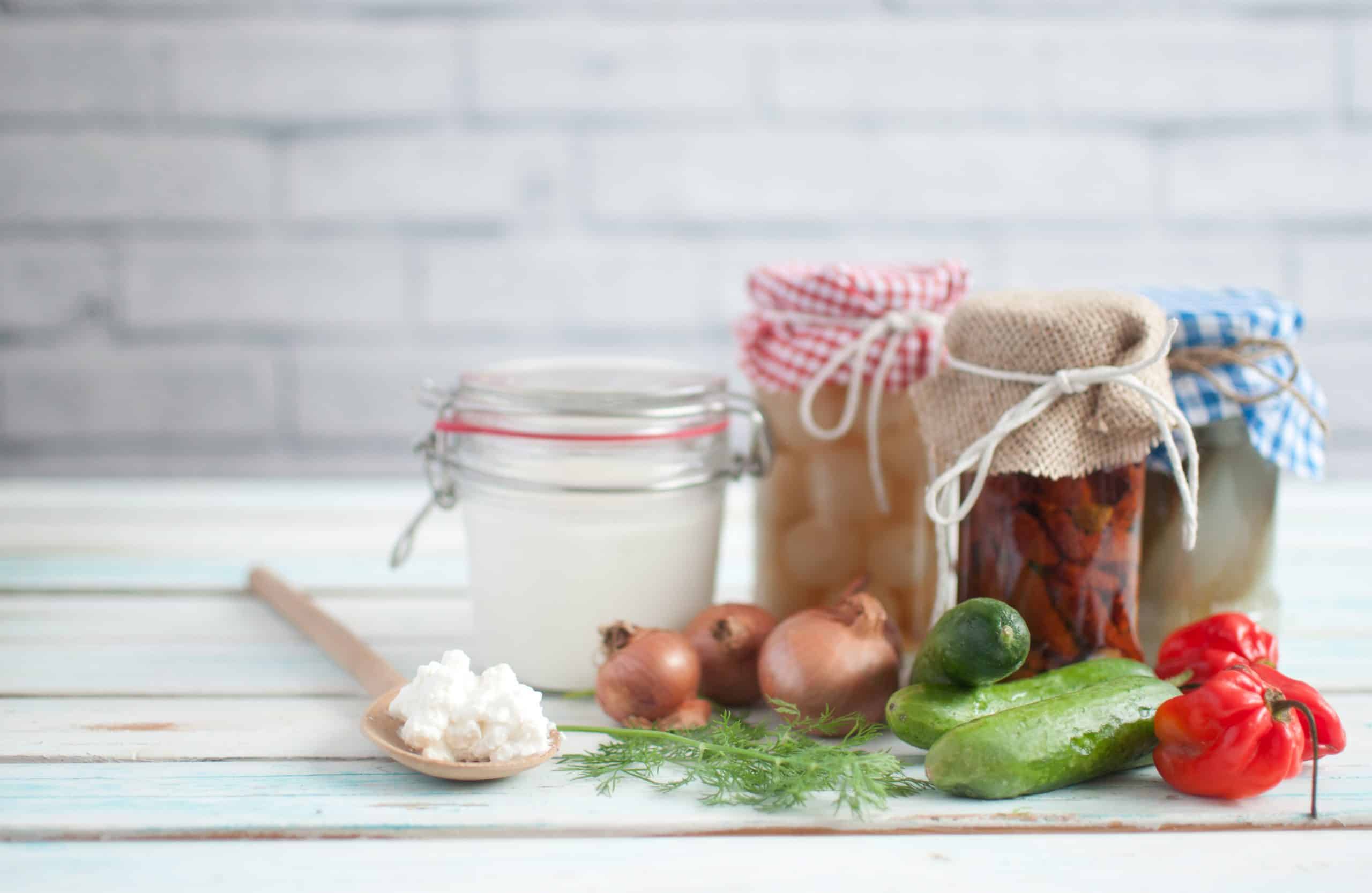
As an affiliate, we may earn a commission from qualifying purchases. We get commissions for purchases made through links on this website from Amazon and other third parties.
This article discovers which foods contain Bifidobacterium to aid our digestion and improve our intestinal health.
Bifidobacterium is a type of bacteria found in many foods and people. Its main goal is to populate the intestines with the good, natural gut flora that will help digest food for you.
The best places to find this beneficial bacterium are yogurt, probiotics like kefir or sauerkraut (yum!), black tea, and tempeh – one of my favorites because it has so much protein too!
Bifidobacteria as well as other beneficial bacteria can be found in fermented dairy foods, especially yogurt.
Eating substances rich in these probiotics is a sort of home remedy for diarrhea, vaginitis, and yeast infections because it promotes the growth of these as opposed to other bacteria. B. infantis has been proven to dramatically reduce irritable bowel syndrome (IBS) in patients and if given alone can almost normalize the patient.
- Probiotics are live microorganisms that have health benefits when consumed (1).
- Probiotics — which are usually beneficial bacteria — provide all sorts of powerful benefits for your body and brain.
- They may improve digestive health, reduce depression and promote heart health (2, 3, 4).
- Some evidence suggests they may even give you better-looking skin (5).
- Getting probiotics from supplements is popular, but you can also get them from fermented foods.
List of super healthy foods
Knowing what healthy foods to eat is important, but it can be difficult. Here are some of the most common superfoods that you should be eating more often:
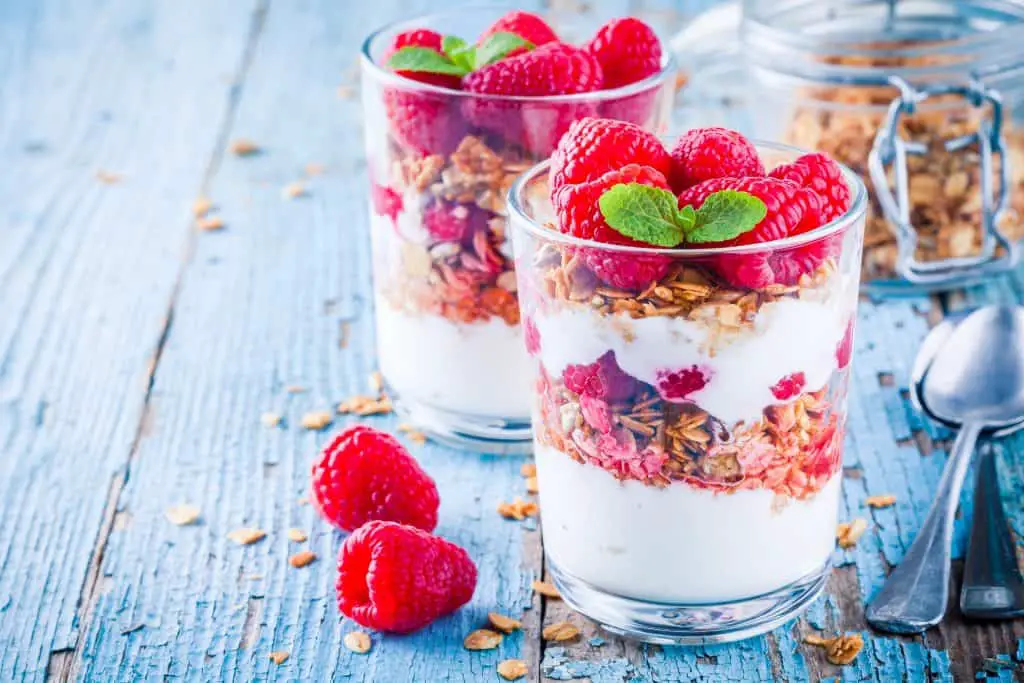
1. Yogurt
Yogurt is one of the best sources of probiotics, which are friendly bacteria that can improve your health.
It is made from milk that has been fermented by friendly bacteria, mainly lactic acid bacteria and bifidobacteria (6).
Eating yogurt is associated with many health benefits, including improved bone health. It is also beneficial for people with high blood pressure (7, 8).
In children, yogurt may help reduce diarrhea caused by antibiotics. It can even help relieve the symptoms of irritable bowel syndrome (IBS) (9, 10, 11).
Additionally, yogurt may be suitable for people with lactose intolerance. This is because the bacteria turn some of the lactose into lactic acid, which is also why yogurt tastes sour.
However, keep in mind that not all yogurt contains live probiotics. In some cases, the live bacteria have been killed during processing.
For this reason, make sure to choose yogurt with active or live cultures.
Also, make sure to always read the label on yogurt before you buy it. Even if it is labeled low-fat or fat-free, it may still be loaded with high amounts of added sugar.
Probiotic yogurt is linked to a number of health benefits and may be suitable for people with lactose intolerance. Make sure to choose yogurt that has active or live cultures.
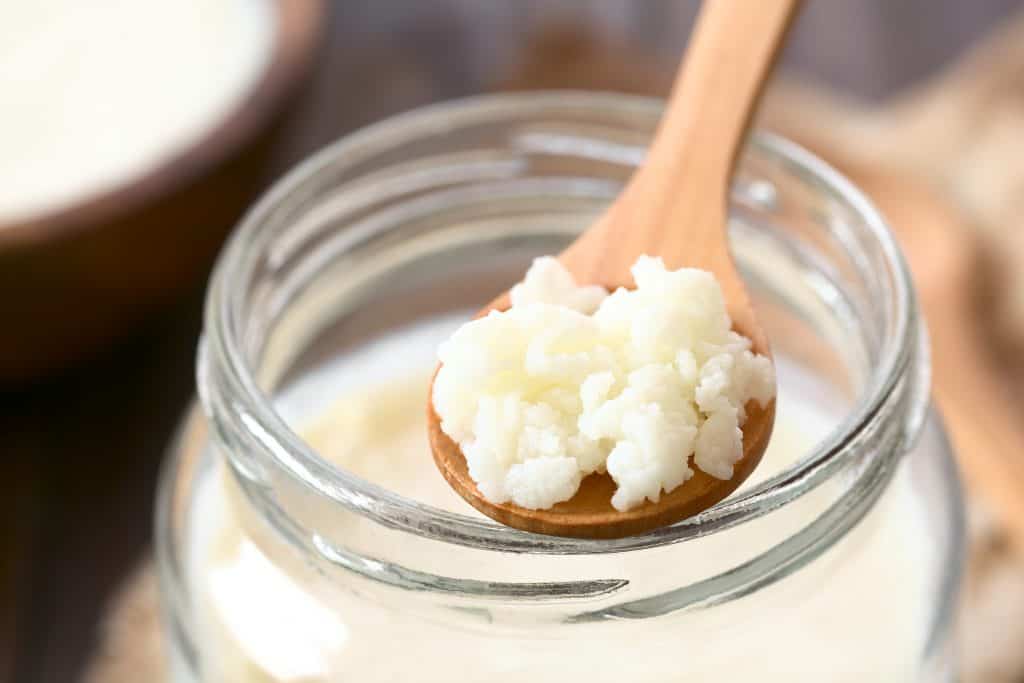
2. Kefir
Kefir is a fermented probiotic milk drink. It is made by adding kefir grains to cow’s or goat’s milk.
Kefir grains are not cereal grains, but rather cultures of lactic acid bacteria and yeast that look a bit like cauliflower.
The word kefir allegedly comes from the Turkish word keyif, which means “feeling good” after eating (12).
Indeed, kefir has been linked to various health benefits.
It may improve bone health, help with some digestive problems and protect against infections (2, 13, 14).
While yogurt is probably the best-known probiotic food in the Western diet, kefir is actually a better source. Kefir contains several major strains of friendly bacteria and yeast, making it a diverse and potent probiotic (15).
Like yogurt, kefir is generally well tolerated by people who are lactose intolerant (16).
Kefir is a fermented milk drink. It is a better source of probiotics than yogurt, and people with lactose intolerance can often drink kefir with no problems.
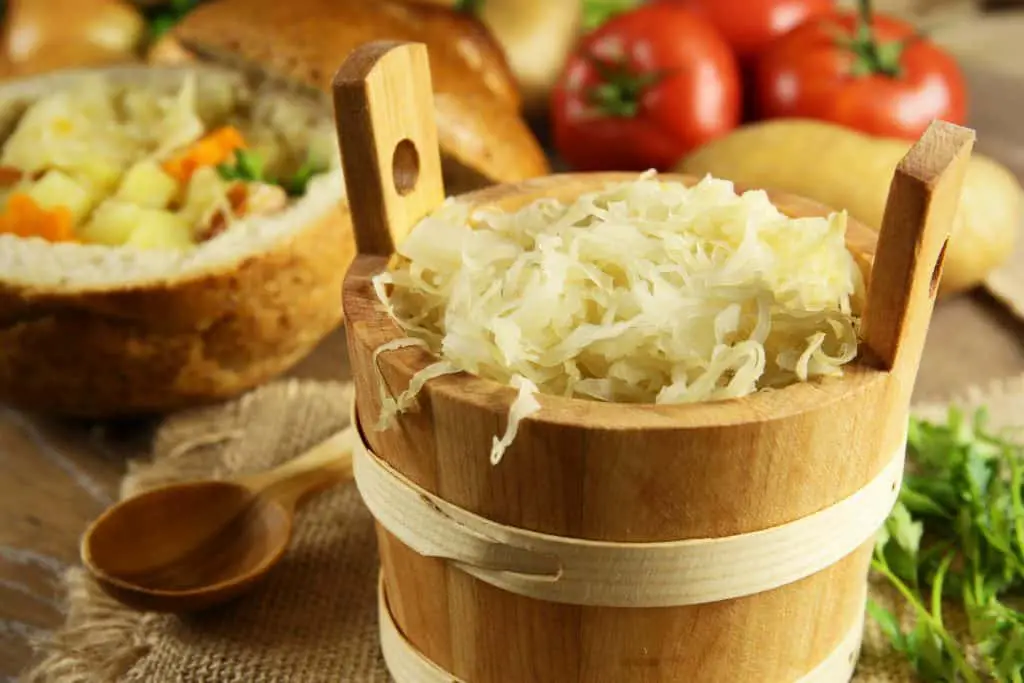
3. Sauerkraut
Sauerkraut is finely shredded cabbage that has been fermented by lactic acid bacteria.
It is one of the oldest traditional foods and is popular in many countries, especially in Europe.
Sauerkraut is often used on top of sausages or as a side dish. It has a sour, salty taste and can be stored for months in an airtight container.
In addition to its probiotic qualities, sauerkraut is rich in fiber as well as vitamins C, B, and K. It is also high in sodium and contains iron and manganese (17).
Sauerkraut also contains the antioxidants lutein and zeaxanthin, which are important for eye health (18).
Make sure to choose unpasteurized sauerkraut, as pasteurization kills the live and active bacteria. You can find raw types of sauerkraut online at Amazon.
Sauerkraut is finely cut, fermented cabbage. It is rich in vitamins, minerals and antioxidants. Make sure to choose unpasteurized brands that contain live bacteria.
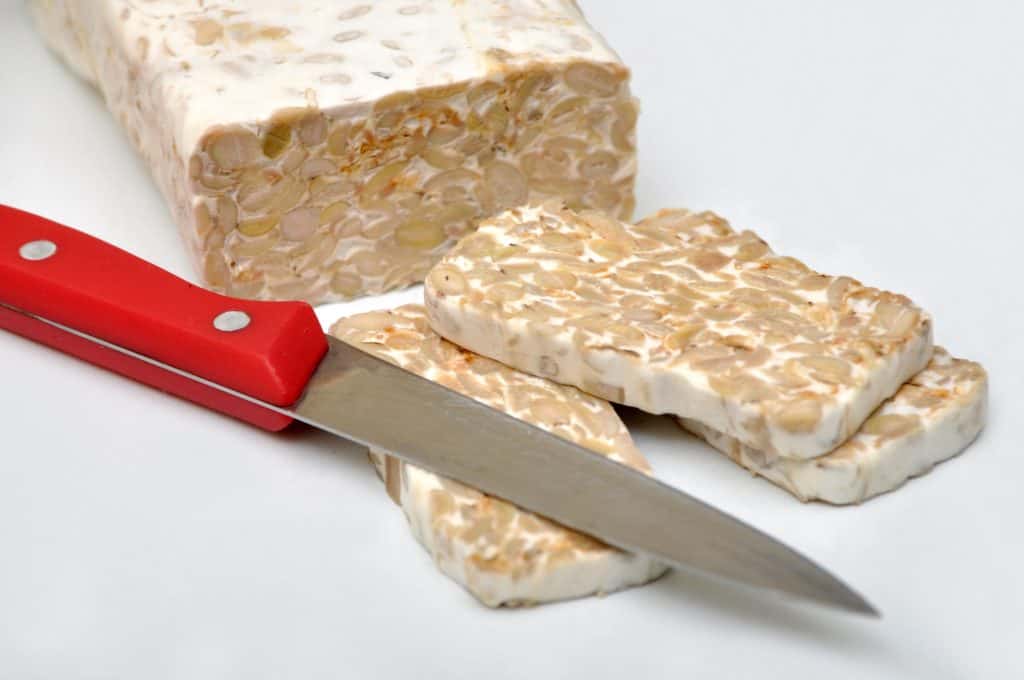
4. Tempeh
Tempeh is a fermented soybean product. It forms a firm patty whose flavor is described as nutty, earthy, or similar to a mushroom.
Tempeh is originally from Indonesia but has become popular worldwide as a high-protein meat substitute.
The fermentation process actually has some surprising effects on its nutritional profile.
Soybeans are typically high in phytic acid, a plant compound that impairs the absorption of minerals like iron and zinc.
However, fermentation lowers the amount of phytic acid, which may increase the number of minerals your body is able to absorb from tempeh (19, 20).
Fermentation also produces some vitamin B12, a nutrient that soybeans do not contain (21, 22, 23).
Vitamin B12 is mainly found in animal foods, such as meat, fish, dairy, and eggs (24).
This makes tempeh a great choice for vegetarians as well as anyone looking to add a nutritious probiotic to their diet.
Tempeh is a fermented soybean product that serves as a popular, high-protein substitute for meat. It contains a decent amount of vitamin B12, a nutrient found mainly in animal products.

5. Kimchi
Kimchi is a fermented, spicy Korean side dish.
Cabbage is usually the main ingredient, but it can also be made from other vegetables.
Kimchi is flavored with a mix of seasonings, such as red chili pepper flakes, garlic, ginger, scallion, and salt.
Kimchi contains the lactic acid bacteria Lactobacillus kimchi, as well as other lactic acid bacteria that may benefit digestive health (25, 26).
Kimchi made from cabbage is high in some vitamins and minerals, including vitamin K, riboflavin (vitamin B2), and iron. Find kimchi online at Amazon.
Kimchi is a spicy Korean side dish, usually made from fermented cabbage. Its lactic acid bacteria may benefit digestive health.
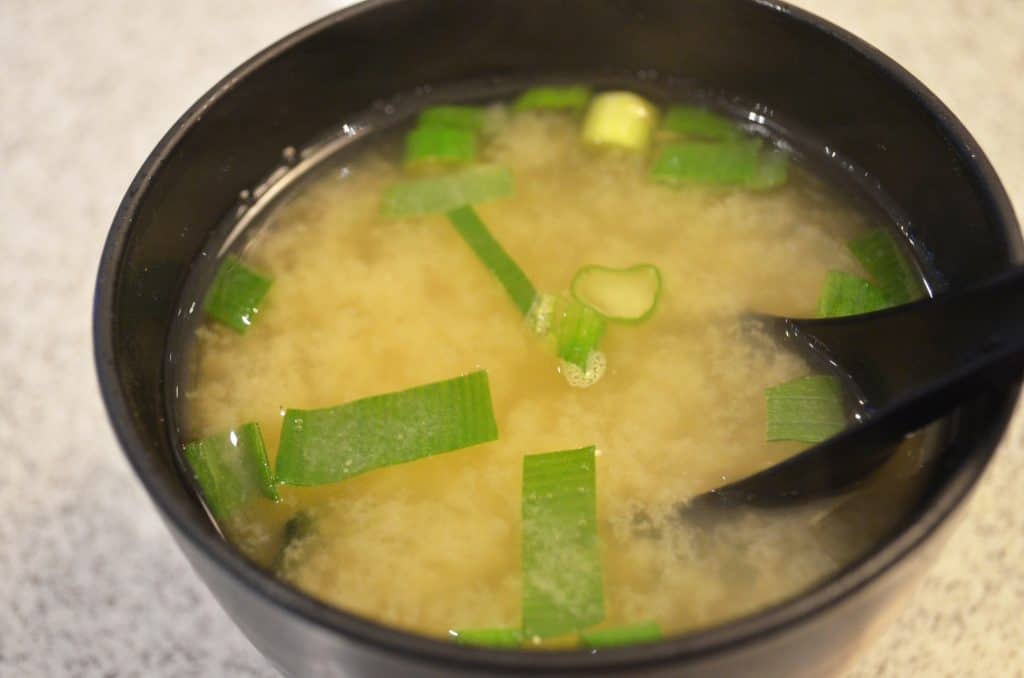
6. Miso
Miso is a Japanese seasoning.
It is traditionally made by fermenting soybeans with salt and a type of fungus called koji.
Miso can also be made by mixing soybeans with other ingredients, such as barley, rice, and rye.
This paste is most often used in miso soup, a popular breakfast food in Japan. Miso is typically salty. You can buy it in many varieties, such as white, yellow, red and brown.
Miso is a good source of protein and fiber. It is also high in various vitamins, minerals, and plant compounds, including vitamin K, manganese, and copper.
Miso has been linked to some health benefits.
One study reported that frequent miso soup consumption was associated with a lower risk of breast cancer in middle-aged Japanese women (27).
Another study found that women who ate a lot of miso soup had a reduced risk of stroke (28).
Miso is a fermented soybean paste and a popular Japanese seasoning. It is rich in several important nutrients and may reduce the risk of cancer and stroke, especially in women.
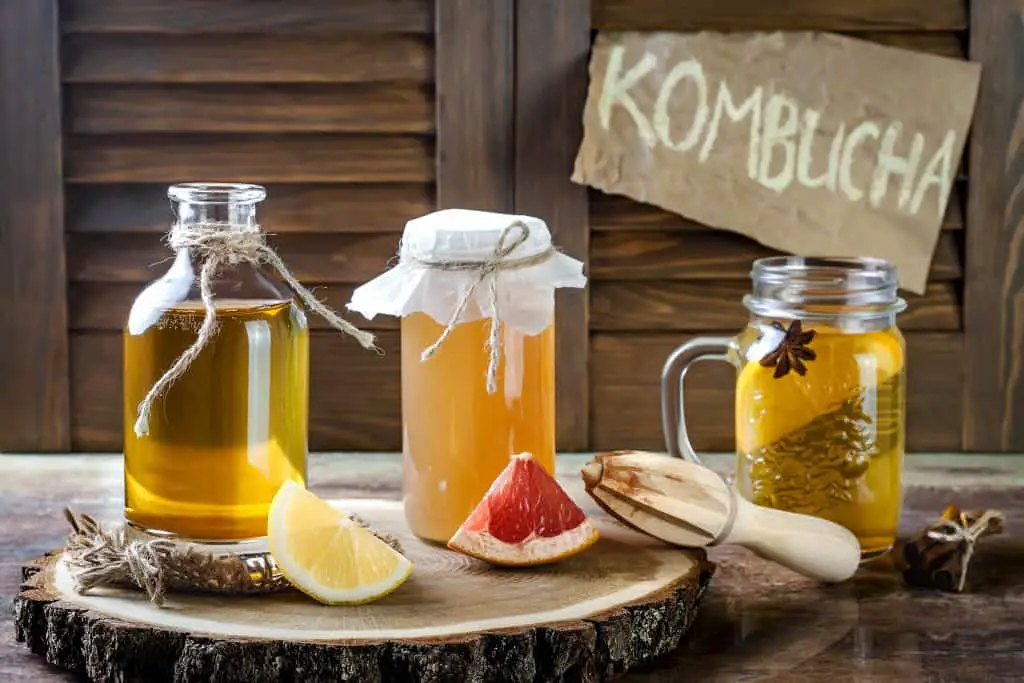
7. Kombucha
Kombucha is a fermented black or green tea drink.
This popular tea is fermented by a friendly colony of bacteria and yeast. It is consumed in many parts of the world, especially in Asia. You can even purchase it online at Amazon.
The internet abounds with claims about the potential health effects of kombucha.
However, high-quality evidence on kombucha is lacking.
The studies that exist are animal and test-tube studies, and the results may not apply to humans (29).
However, because kombucha is fermented with bacteria and yeast, it does probably have health benefits related to its probiotic properties.
Kombucha is a fermented tea drink. It is claimed to have a wide range of health benefits, but more research is needed.
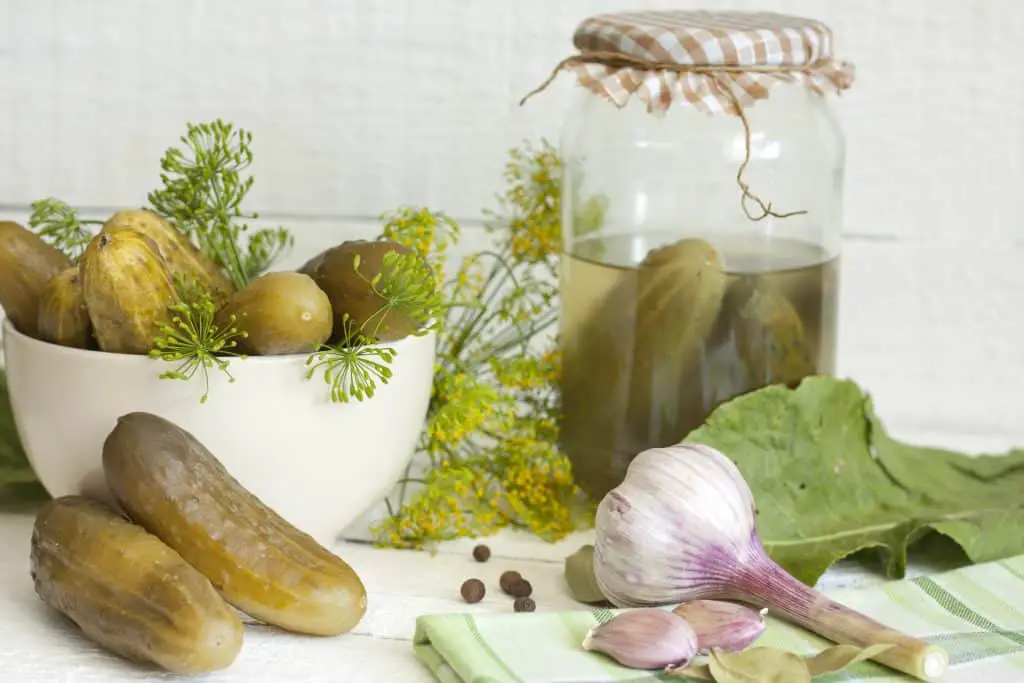
8. Pickles
Pickles (also known as gherkins) are cucumbers that have been pickled in a solution of salt and water.
They are left to ferment for some time, using their own naturally present lactic acid bacteria. This process makes them sour.
Pickled cucumbers are a great source of healthy probiotic bacteria that may improve digestive health.
They are low in calories and a good source of vitamin K, an essential nutrient for blood clotting.
Keep in mind that pickles also tend to be high in sodium.
It is important to note that pickles made with vinegar do not contain live probiotics.
Pickles are cucumbers that have been pickled in salty water and fermented. They are low in calories and high in vitamin K. However, pickles made using vinegar do not have probiotic effects.
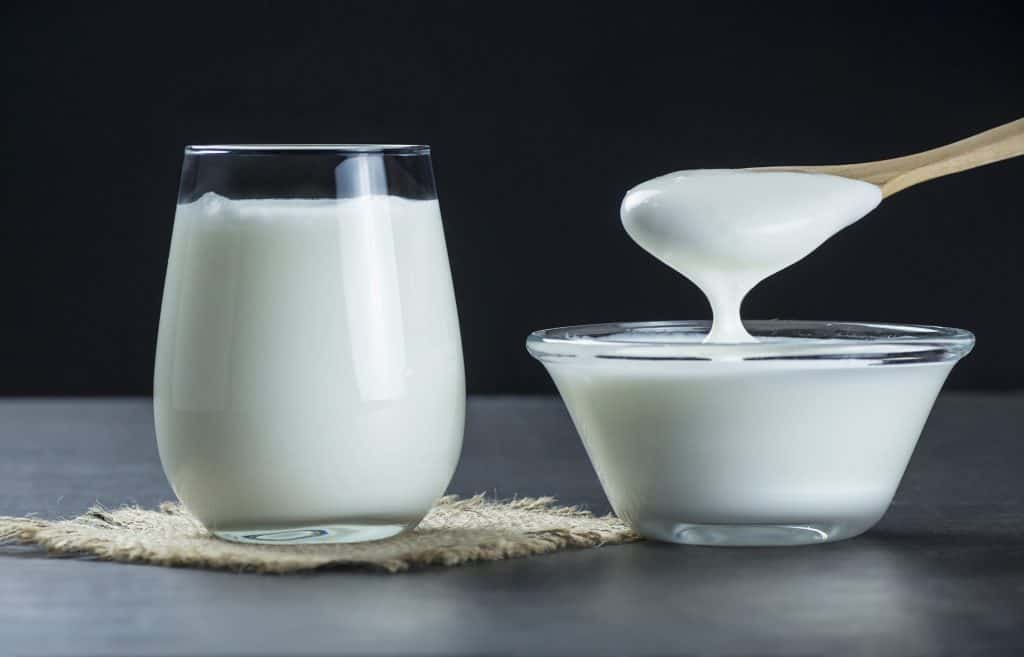
9. Traditional Buttermilk
The term buttermilk actually refers to a range of fermented dairy drinks.
However, there are two main types of buttermilk: traditional and cultured.
Traditional buttermilk is simply the leftover liquid from making butter. Only this version contains probiotics, and it is sometimes called “grandma’s probiotic.”
Traditional buttermilk is mainly consumed in India, Nepal, and Pakistan.
Cultured buttermilk, commonly found in American supermarkets, generally does not have any probiotic benefits.
Buttermilk is low in fat and calories but contains several important vitamins and minerals, such as vitamin B12, riboflavin, calcium, and phosphorus.
Traditional buttermilk is a fermented dairy drink mainly consumed in India, Nepal and Pakistan. Cultured buttermilk, found in American supermarkets, does not have any probiotic benefits.
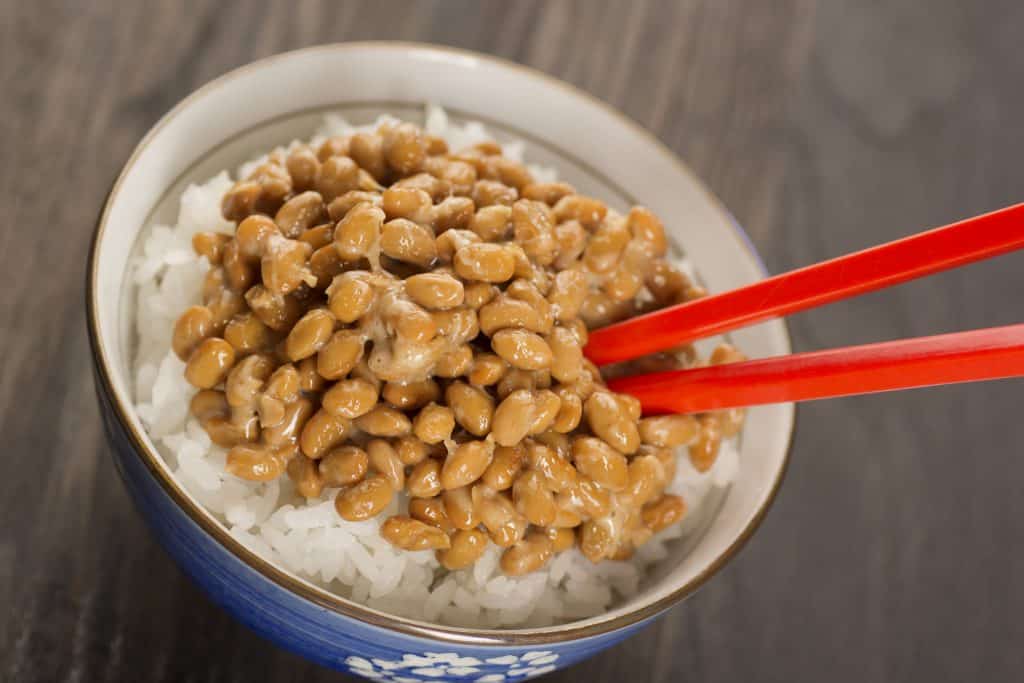
10. Natto
Natto is another fermented soybean product, like tempeh and miso.
It contains a bacterial strain called Bacillus subtilis.
Natto is a staple in Japanese kitchens. It is typically mixed with rice and served with breakfast.
It has a distinctive smell, slimy texture, and strong flavor. Natto is rich in protein and vitamin K2, which is important for bone and cardiovascular health (30, 31).
A study in older Japanese men found that consuming Natto on a regular basis was associated with higher bone mineral density. This is attributed to the high vitamin K2 content of Natto (32).
Other studies suggest that Natto may help prevent osteoporosis in women (33, 34).
Natto is a fermented soy product that is a staple in Japanese kitchens. It contains a high amount of vitamin K2, which may help prevent osteoporosis and heart attacks.
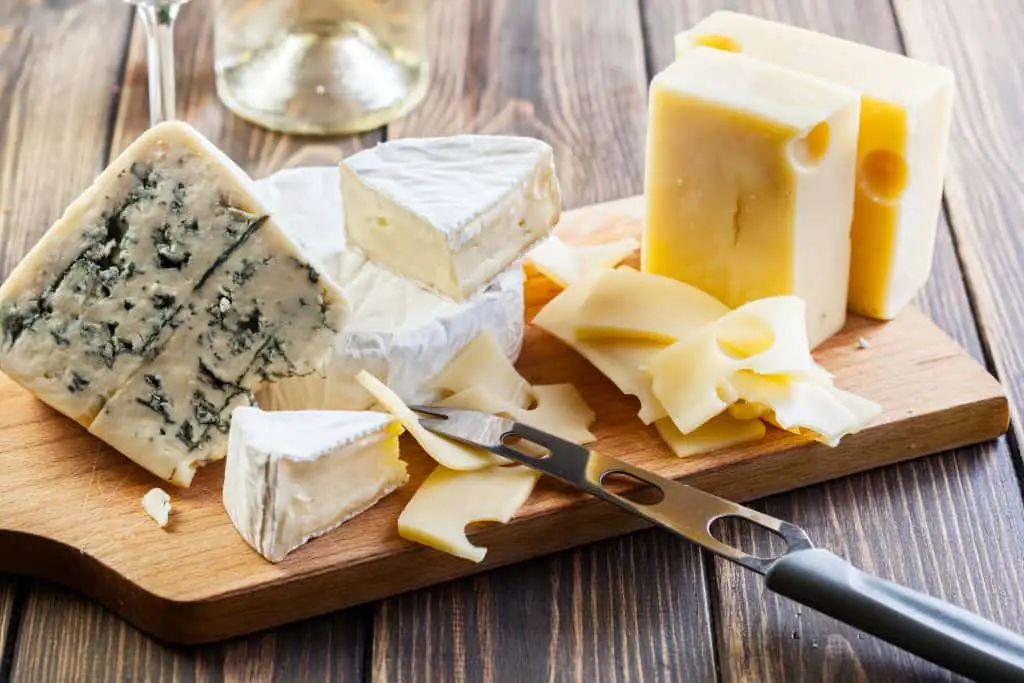
11. Some Types of Cheese
Although most types of cheese are fermented, it does not mean that all of them contain probiotics.
Therefore, it is important to look for live and active cultures on the food labels.
The good bacteria survive the aging process in some cheeses, including Gouda, mozzarella, cheddar, and cottage cheese (35, 36).
Cheese is highly nutritious and a very good source of protein. It is also rich in important vitamins and minerals, including calcium, vitamin B12, phosphorus, and selenium (37).
Moderate consumption of dairy products such as cheese may even lower the risk of heart disease and osteoporosis (38, 39).
Only some types of cheese — including cheddar, mozzarella and gouda — contain probiotics. Cheese is very nutritious and may benefit heart and bone health.
Probiotic Foods Are Incredibly Healthy
There are many very healthy probiotic foods you can eat.
This includes numerous varieties of fermented soybeans, dairy, and vegetables. 11 of those are mentioned here, but there are many more out there.
- If you can’t or won’t eat any of these foods, you can also take a probiotic supplement.
- Shop for probiotic supplements online at Amazon.
- Probiotics, from both foods and supplements, can have powerful effects on health.
In Conclusion
Foods contain Bifidobacterium
In the world of probiotics, Bifidobacterium is one of the most well-known and studied strains.
Doctors often recommend this strain as a good source for gastrointestinal health because it has been shown to reduce symptoms such as gas production or diarrhea in some people.
These benefits have also earned them praise from many dieticians who focus on gut-health issues like IBS (Irritable Bowel Syndrome).
Some common sources include yogurt, miso soup with tofu, and sauerkraut juice made at home using cabbage and saltwater; these types should be eaten regularly by those seeking optimal digestive wellness.
A quick reminder ..
Probiotics.tips aim to provide the most up-to-date information, help, and advice for YOU to make informed decisions. If you are unsure or uncertain and require more clarity, please reach out to us and we will gladly come back and advise you as best we can.
The best means to reach us is via email at info@probiotics.tips or fill out the form on our Contact Us page – click here.
Probiotics.tips
About Us
Our goal is to empower you with concise probiotic guidance for a healthier gut. With expert advice, we provide the knowledge to improve your well-being and navigate the world of probiotics efficiently, ensuring you achieve optimal gut health.
- Can You Take Probiotics While Water Fasting?
- Does Fasting Help Microbiome Diversity and Functionality?
- Does Fasting Help Your Bowels
- Does Fasting Help Probiotics? Understanding Gut Health Benefits
- Does Fasting Help the Gut: Understanding the Impact on Digestive Health
Disclaimer
As an affiliate, we may earn a commission from qualifying purchases. We get commissions for purchases made through links on this website from Amazon and other third parties.
Check these out on Amazon





